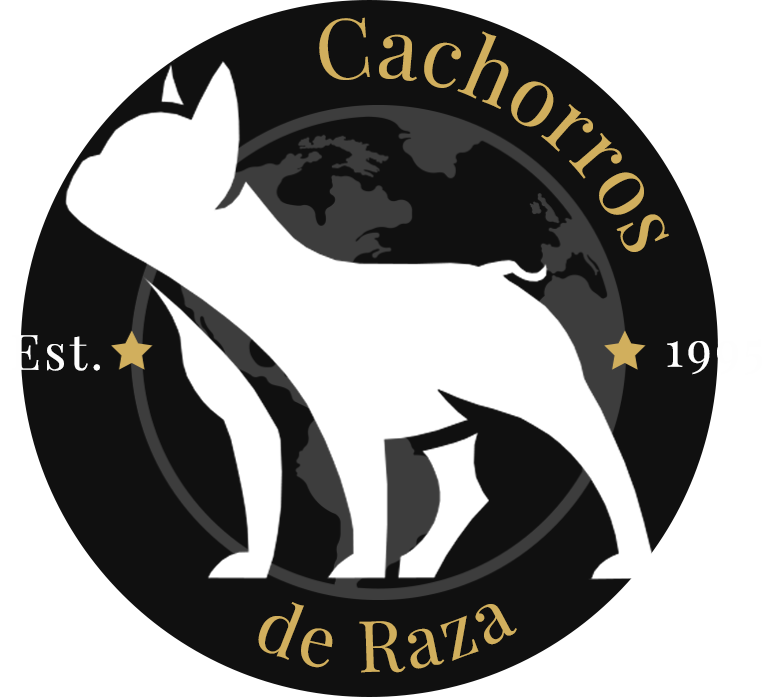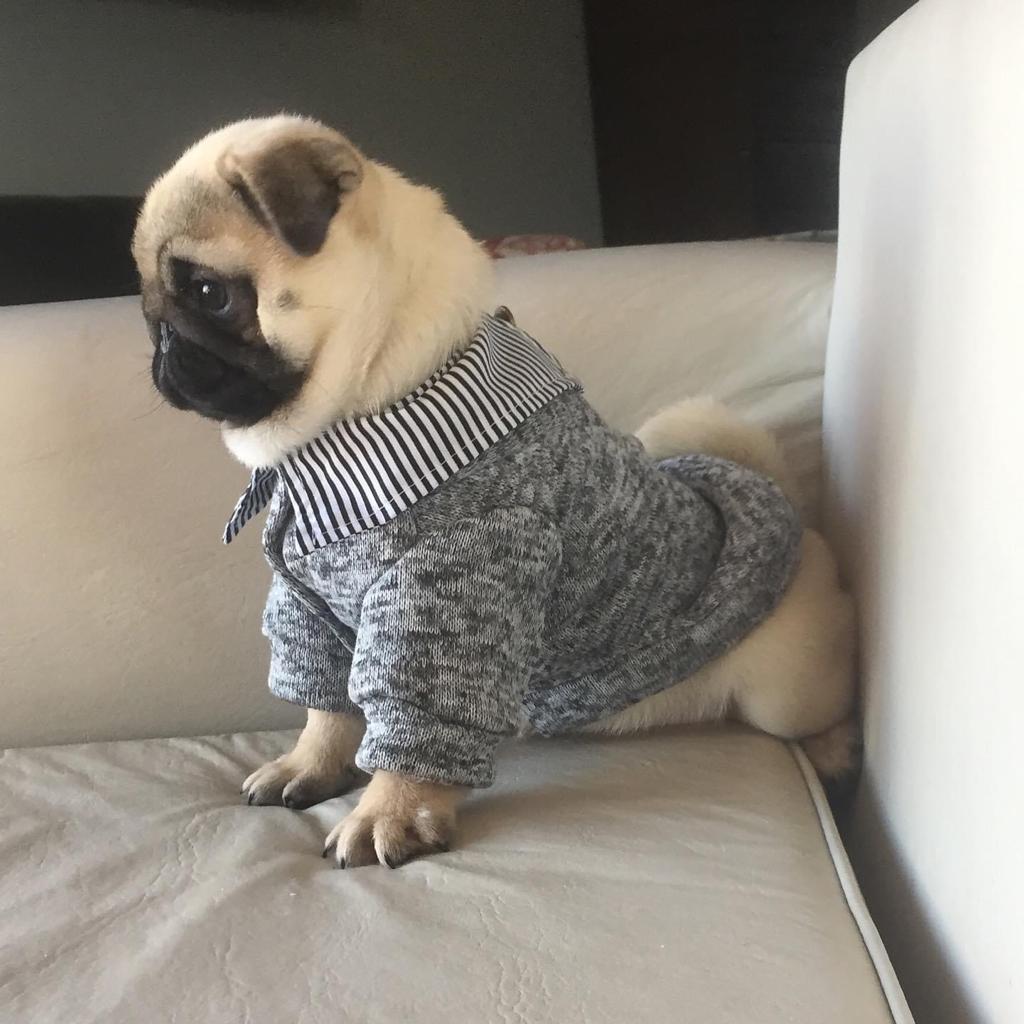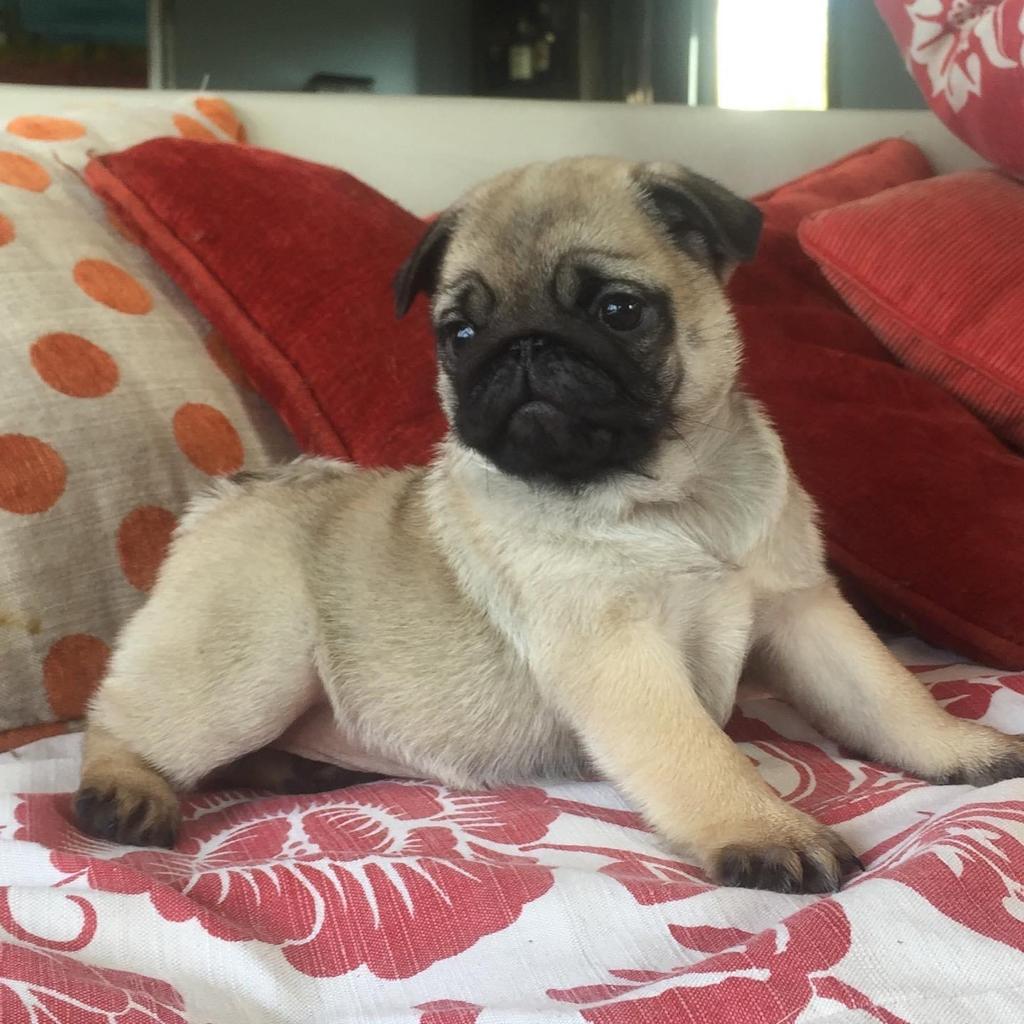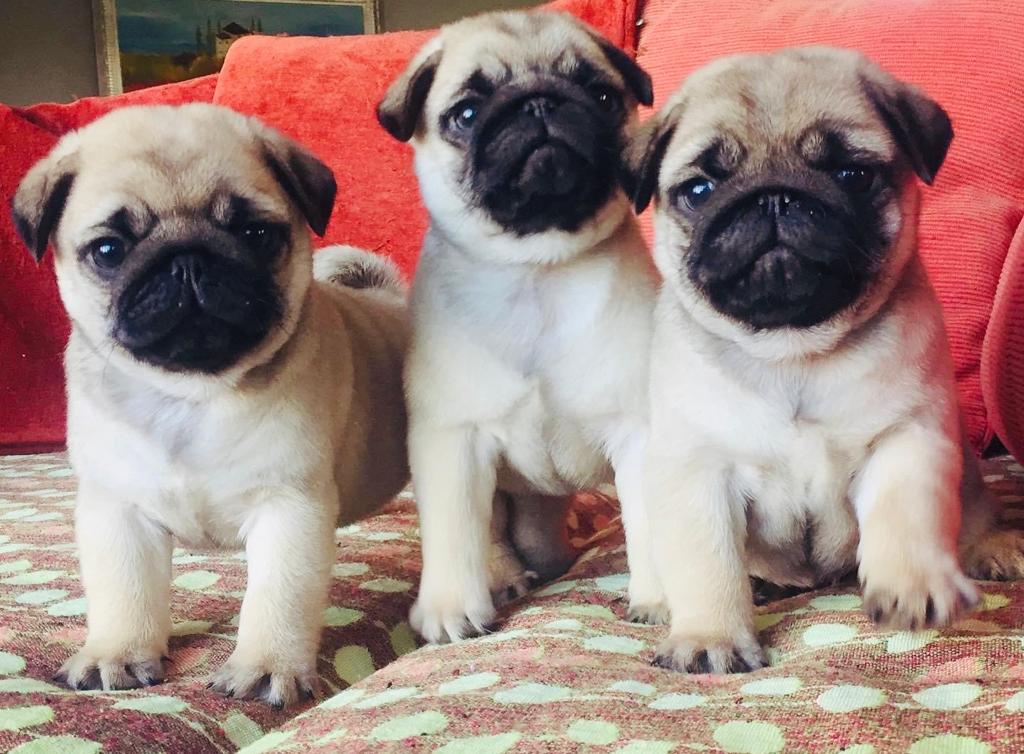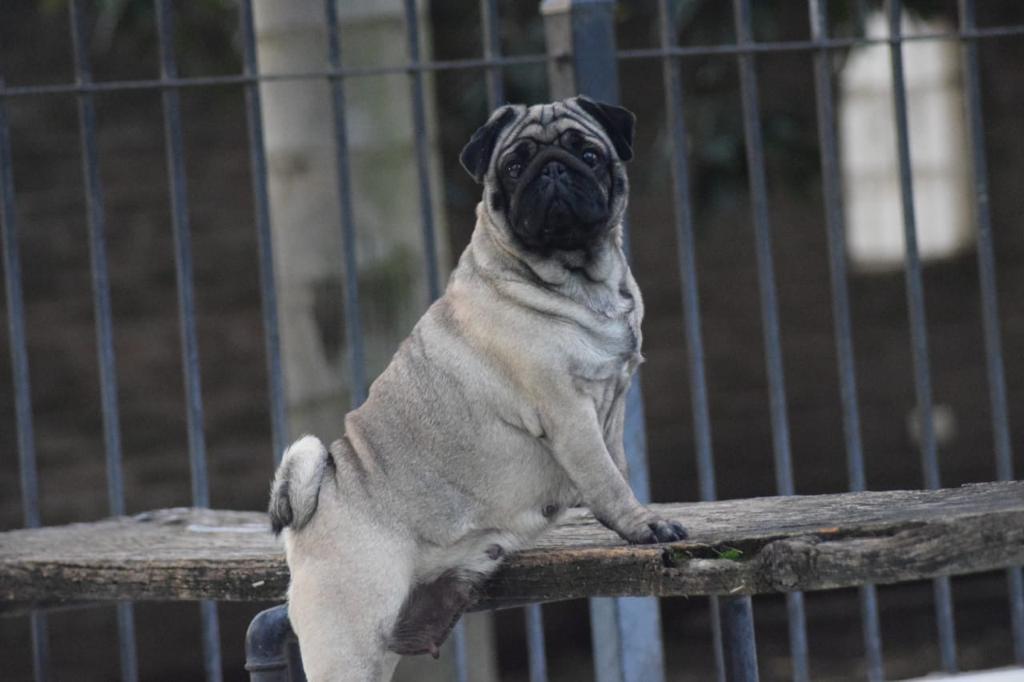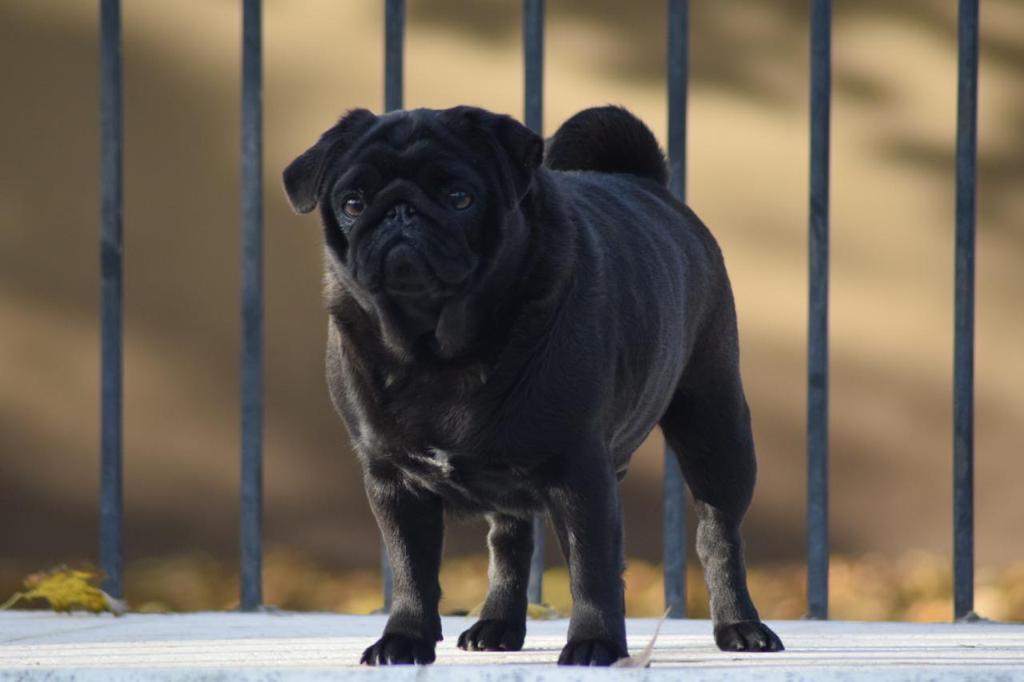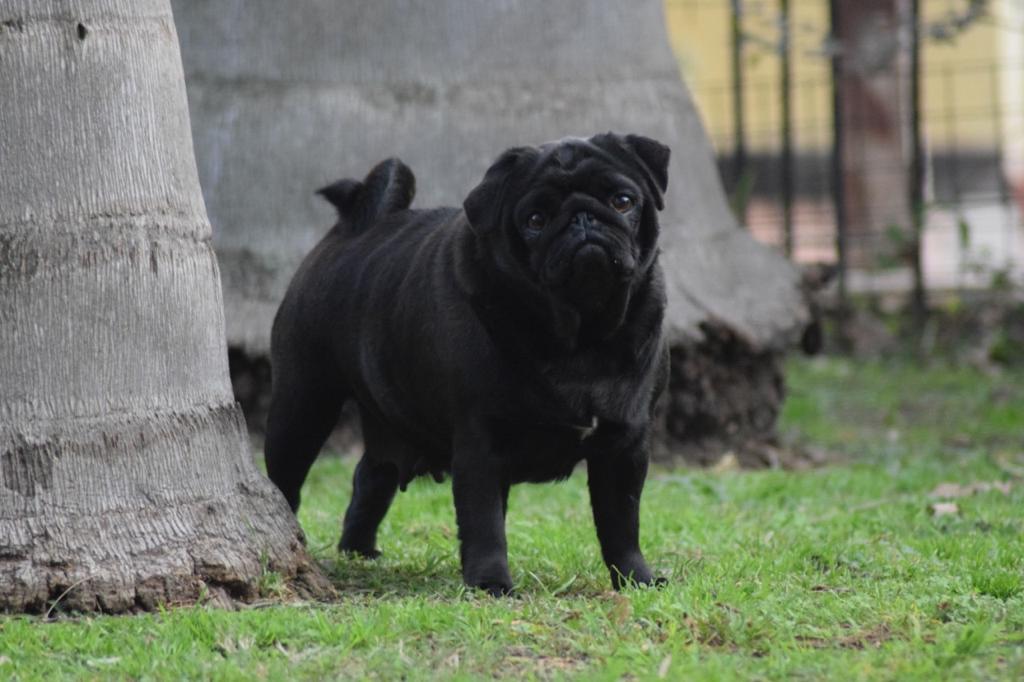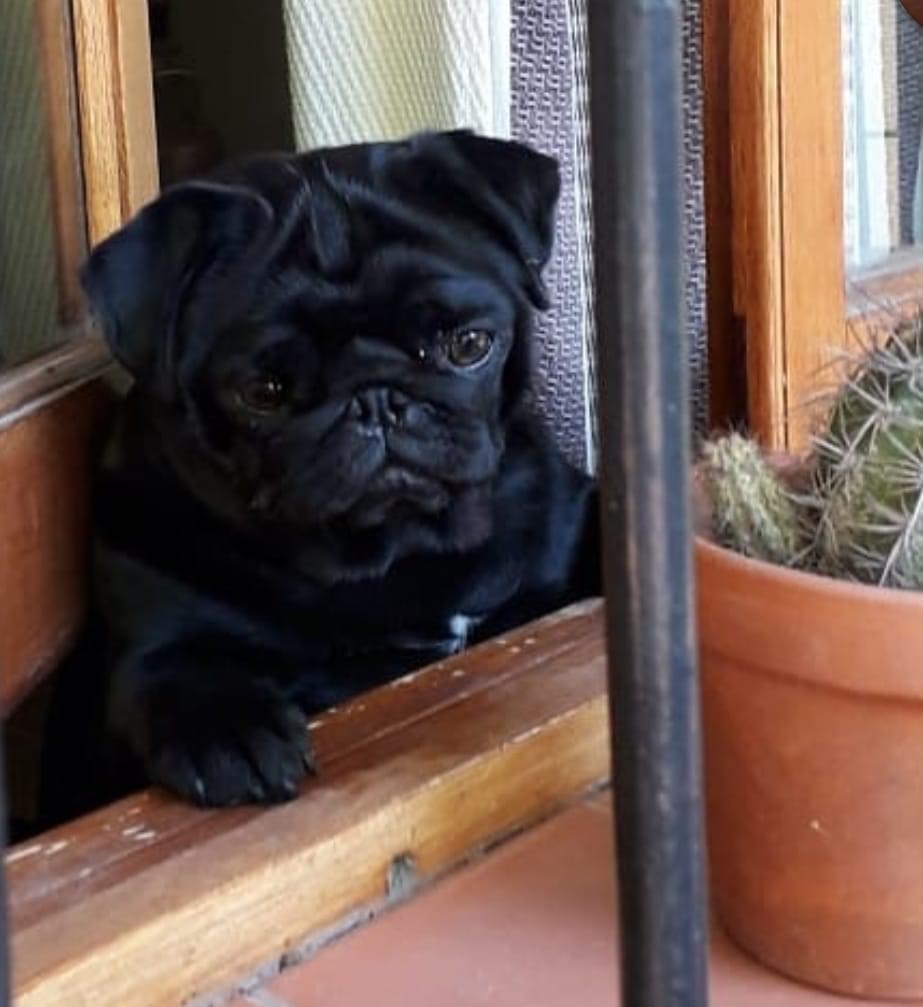Features
Between 15 and 35 cm approx. in males and females.
Between 3 and 10 kg.
Short, smooth and fine hair.
Balanced / Intelligent / Active / Loving
Black, Cervato, Silver Cervato, Apricot
Your eyes may experience corneal ulcers and dry eye. Pugs also experience respiratory problems, especially in the heat and humidity. Estimated life expectancy of 12 to 15 years
Origin of the pug
As in many other dog breeds, the origin of the pug is uncertain and controversial. It is known that it comes from China, but it is still debated if it has among its closest relatives large molossian dogs or Pekingese and similar dogs. What is known is that centuries ago these dogs were, along with the Pekingese, favorite animals in Tibetan monasteries. Probably they were brought to Holland by Dutch traders, from where the breed would have spread to France, England and all Europe.
Since their entrance in Europe and later in America, the Pug have been considered charming companion dogs and worthy show dogs. The western fascination with this breed has reached the point that many pug have been the protagonists of films and television series.
Physical characteristics of the pug
This is a short, chubby and compact dog. Despite being a small dog, the pug is a muscular animal. The upper line of its body is level and the chest is wide. The head is big, round and without cracks in the skull. It does not have the shape of an apple, as in the Chihuahua dogs, and the skin that covers it is very wrinkled. The muzzle is short and square. The pug’s eyes are dark, large and globular in shape. They are bright and their expression is sweet and concerned. The ears are thin, small and velvety textured. They can be presented in two varieties:
- Pink ears, which are small, hanging and folded back.
- Button ears, which are ears folded forward, pointing toward the eye.
The tail is of high insertion and is presented curled, as tight as possible, on the hip. According to the FCI standard, double curling is highly desirable. The ideal size of the pug is not indicated in the FCI breed standard, but these dogs are small and their height at the withers is usually between 25 and 28 centimeters. The ideal weight, which is indicated in the breed standard, ranges from 6.3 to 8.1 kilograms.
The hair of this dog is fine, smooth, soft, short and shiny. The accepted colors are: silver, apricot, light fawn and black. The muzzle, the moles on the cheeks, the rhombus on the forehead and the groove (a line from the occiput to the curl of the tail) must be black.
Character of the pug
The pug has the typical temperament of a companion dog. It is affectionate, happy and playful. It has a strong personality and likes to draw attention, but is stable in character.
These dogs are easy to socialize and, properly socialized, tend to get along with adults, children, other dogs and other animals. However, although they are playful, they do not tolerate intense play and mischief from young children. Of course, to get along with strangers and other pets, it is important to socialize them from a puppy.
In general, these dogs do not have behavioral problems, but they can develop separation anxiety with some ease. Pugs need constant company and can become destructive dogs when left alone for long periods of time. They also need to exercise and receive mental stimulation so they don’t get bored.
They make excellent pets for most individuals and families with large children, and even for novice owners. However, this breed is not recommended for families with very young children, as they tend to unintentionally mistreat small dogs. They are also not good pets for people who spend most of their day away from home or for very active people.
Pug Care
The care of the coat does not demand much time or effort, but it is necessary to brush the pug once or twice a week to remove the dead coat. These dogs lose a lot of hair, so it may be desirable to brush them more frequently to keep furniture and clothing free of dog hair. Bathing should only be done when the dog is dirty, but wrinkles on the face and muzzle should be cleaned with a damp cloth and dried frequently to avoid skin infections.
Pugs are very playful dogs, and need moderate exercise, with daily walks and moderate play time. Be careful not to demand too much intense exercise from them, since their flattened muzzle and robust structure do not provide much resistance and make them susceptible to thermal shocks, especially in hot and humid climates.
On the other hand, these dogs need a lot of company and are not suitable for people who spend most of their time outdoors. Pugs demand constant company and attention and can develop destructive habits when left alone for long periods of time. They are dogs for living indoors with the family and they adapt very well to life in apartments and big cities.
Pug Education
This breed of dogs are easy to train when positive training styles are employed. It is common to hear traditional trainers say that pug dogs are stubborn and difficult to train, but that is usually the result of a poor choice of dog training method, rather than a characteristic of the breed. When positive training methods, such as clicker training, are used correctly, excellent results can be achieved with these dogs.
Pug Health
Despite being a small dog, the pug tends to be healthy, except for potential problems caused by its short muzzle. The breed does not present canine diseases with exaggerated incidences, but presents with certain frequency elongated palate, stenotic nostrils, patellar dislocation, Legg-Calve-Perthes disease and entropion. Occasionally there are also cases of epilepsy.
Because of their prominent eyes and flattened face, they are prone to eye injuries. Also, because of its robust structure, tend to develop obesity, so you have to take care of your diet and amount of daily exercise.
